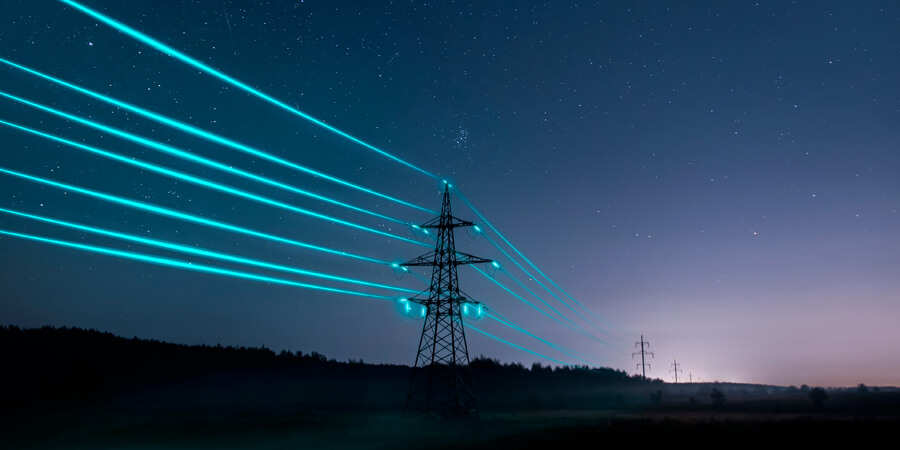What does “energy efficiency” mean exactly? Energy efficiency stands for applying less energy while providing the same service. Humans nowadays are using much more energy than they need, and it’s impacting our world without us necessarily realizing it. For many operators, energy consumption has always been a significant consideration, as it is one of the highest operating costs. Today, though, it’s becoming even more significant due to climate change and sustainability considerations. The potential increase in data traffic (up to 1,000 times more) and the need for the infrastructure to handle it could make 5G consume up to 2-3 times more energy.
Where to Start
Energy costs for telecom operators around the world are already high; at the end of 2018, they accounted for, on average, around 5% of operating expenses. According to a McKinsey report for mobile and fixed operators in emerging markets, energy accounts for as much as 7% of expenses due to low grid coverage, and as costs rise, margins will be squeezed further at a time when the industry is already struggling.
This growing energy challenge is, in large measure, a result of the exponential growth in traffic that new 5G services are likely to deliver. However, the proposed 5G use cases and new spectrum bands will require many more mobile sites, exceeding the potential energy efficiency of the 5G-new-radio standard. According to McKinsey’s estimates, 5G sites will require two to three times more power than 4G sites, and the number of data centers will also need to increase as more services are provided at the edge. In addition, some telcos have begun to find ways to cut emissions from their networks. Through AI-based RAN optimization, there is strong potential to reduce the number of sites and lower emissions. Other telco players have found success in implementing solar, wind and hydrogen-powered remote sites. Vodafone, for example, has been launching eco towers across the UK, and Telia has launched a self-sufficient tower in the scenic Trollstigen region to address the coverage needs in the remote but well-trafficked area. The transition from 4G to 5G also provides an interesting opportunity to optimize energy savings. Several mobile operators are in the process of sunsetting their 2G and 3G networks, which is good from an energy efficiency perspective, especially if the equipment can be reused or recycled. A few additional steps that operators might consider:
- Modernizing the network across all network nodes (especially transport, data-center, and RAN)
- Implementing energy measurement and saving features, such as AI-powered MIMO sleep mode and, in turn, improving network performance
- Selecting a virtualization-based architecture across network architecture and virtualized-RAN architecture
- Utilizing the AI concept and O-RAN-based architecture to improve network efficiency
Nokia and Telefónica have made great strides by working together to build green 5G networks, as well as developing smart energy network infrastructure and AI technology to improve sustainability and performance. Despite its traffic tripling, Telefonica succeeded in reducing its energy consumption last year by 1%. According to research, half of CSPs expect to save 10-20% on energy costs in the next few years.
Seizing these opportunities requires major shifts in organizational mindsets. Despite the fact that energy costs are aggregated at the company level, responsibilities for the cost drivers are spread across a wide range of functions and divisions, such as network and infrastructure planning, field operations, facilities management, procurement and information technology, making it a challenge to manage this level of change.
Leading the Way to Net Zero
Information and communication technology (ICT) organizations have been urged by the International Telecom Union (ITU) to set Net-Zero targets by 2040, if possible, and by 2050 at the latest. Reaching net zero will not be an easy task for mobile operators, companies, governments or private individuals. Like all businesses, telcos are (and should be) pressured to control their emissions, and they are, like many, working towards other sustainability goals such as increased health, education, digital inclusion and more.
Mobile operators worldwide are adopting Net-Zero carbon targets to meet the expectations of their customers, employees, and shareholders. Among the most important strategies for decarbonizing the telecom sector are energy efficiency plans and the switch to renewable energy. Also, mobile operators have entered renewable power purchase agreements that generate cost savings while avoiding the risks of energy price volatility.
However, with the nationwide rollout of 5G, operators must closely monitor their network power consumption. Even though 5G technology is more efficient than prior generations, massive MIMO (mMIMO) and new spectrum bands have led to networks carrying many more megabytes. Thus, to avoid raising energy consumption, operators must explore all optimization techniques available for their 5G networks.
